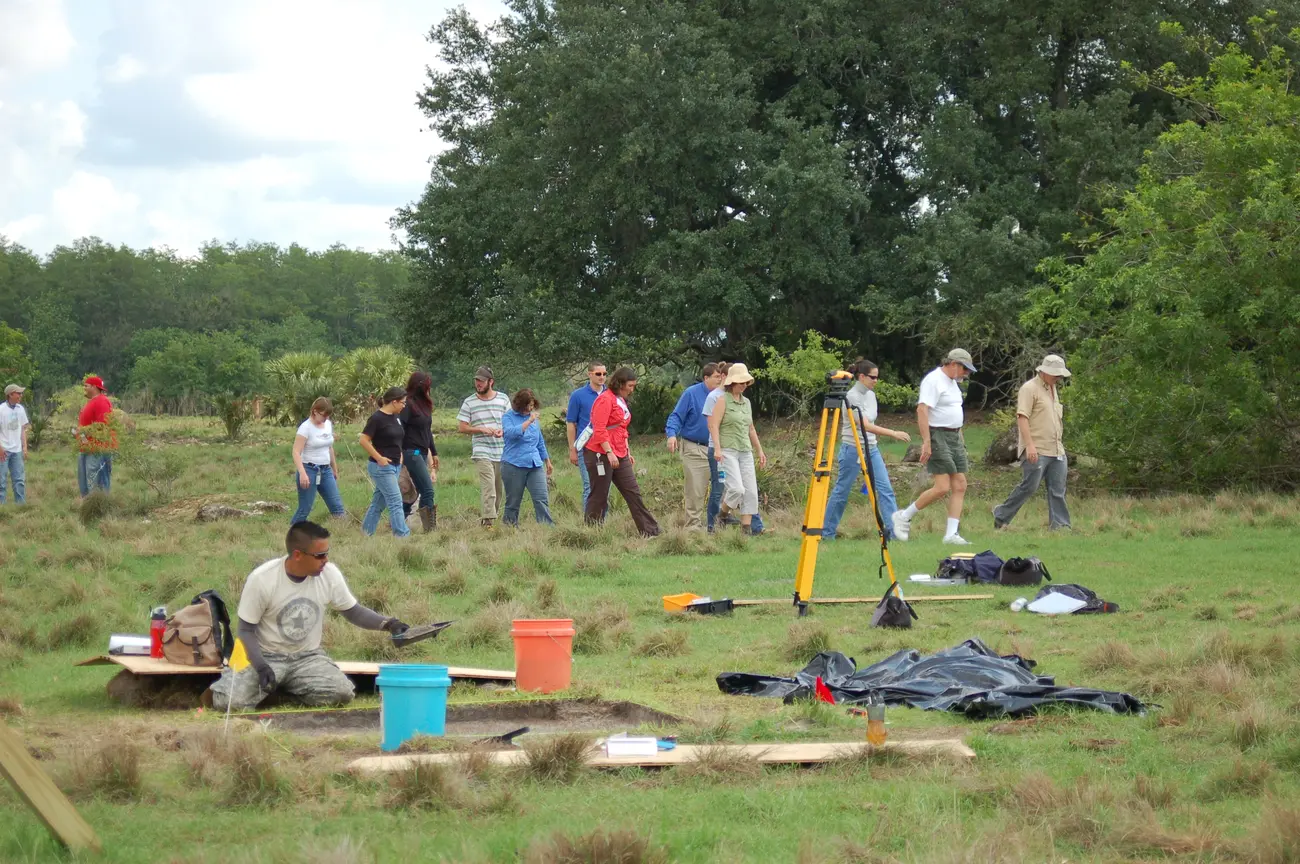Many Florida towns were built around Seminole War forts and some, such as Fort Pierce, Fort Lauderdale, and Fort Myers, retain their fort names.
Fort Shackleford was constructed in 1855 during the Third Seminole War. Archaeologists continue to search for its exact location.
Archaeologist Annette Snapp is Operations Manager for the Ah-Tah-Thi-Ki Seminole Indian Museum in Clewiston, and is leading the effort to find Fort Shackleford.
Dr. Snapp will give a free presentation this Friday night at 7:00 for the Florida Historical Society Archaeological Institute at the Brevard Museum of History and Natural Science, 2201 Michigan Avenue in Cocoa.
Seminole Indians moved to Florida in the 1700s, to avoid the expanding American colonies. Runaway slaves found sanctuary here with the Seminole. White settlers also began coming to the area after the American Revolution to take advantage of Spanish land grants. The First Seminole War started in 1816, when General Andrew Jackson began a series of invasions into Spanish controlled Florida.
“At the time he is very interested in wresting Florida from Spain, and also in the movement of Indians away from the white settlers,” says Snapp.
By 1821, Florida was a Territory of the United States. Andrew Jackson was President in 1830 when the Indian Removal Act was passed, empowering him to arrange the relocation of the Seminole and other Native American groups to land west of the Mississippi River.
“There was this sense that everybody will agree to do this, but of course, it leads to the Trail of Tears,” says Snapp. “The Cherokee and other tribes are forced to walk west to Oklahoma and other areas out west. With Andrew Jackson turning his eyes on, and the Federal Government turning their eyes on Florida, it leads to the Second Seminole War.”
The Seminoles had been pushed onto a reservation in the central part of Florida. During the Second Seminole War, which lasted from 1835 to 1842, tensions rose between Native Americans and white settlers. The Seminole resorted to sporadic guerilla warfare to defend their land.
Following the Second Seminole War, the tribe had been pushed even further south. Florida is named a state in 1845.
The Swamp Land Act of 1850 allowed the Federal Government to give swamp land to states, who could then sell the land to settlers who agreed to drain the swamp. This legislation encouraged an influx of white settlement in Florida.
“Now they’ve created a huge conflict,” says Snapp. “They’re asking people to go into this area where the Seminole are living, and of course, the Seminole are unhappy about it.”
Sporadic guerilla warfare from the Seminole resumes throughout the state, and the Third Seminole War begins in 1855.
“The Federal Government feels like the only solution is to have the Native Americans, the Seminole, agree to move out west, or incite violence from the Seminole, so they have a reason to exterminate them,” says Snapp.
Fort Shackleford was built in 1855 on Seminole land at Big Cypress Reservation, so the U.S. Army could monitor Seminole activities more closely. By the end of the war in 1858, the fort had been destroyed and its exact location is now uncertain.
Four historic markers identifying the corners of Fort Shackleford were placed in 1943. The accuracy of the markers is not assured, since they were placed nearly a century after the fort’s existence. Only one of the markers remains today, and it does not specify which corner of the fort it represents. Still, the one remaining marker provides archaeologists with a starting place.
“There are military records that say that Fort Shackleford was built, and when it was built, and who built it,” says Snapp, “so we have at least a general idea of where they’re located.”
Archaeologists have collected 260 artifacts from various time periods on the possible site of Fort Shackleford, but none of them has definitively proven that the fort was located there. Snapp says the research will continue.
The Seminole Tribe of Florida remains unconquered. At the end of the Third Seminole War the Native Americans in south Florida were left alone. Today the tribe owns the entire Hard Rock franchise, including two Florida casinos and Hard Rock Cafes around the world.
Dr. Ben Brotemarkle is executive director of the Florida Historical Society and host of the radio program “Florida Frontiers,” broadcast locally on 90.7 WMFE Thursday evenings at 6:30 and Sunday afternoons at 4:00, and on 89.5 WFIT Sunday mornings at 7:00. The show can be heard online at myfloridahistory.org.
